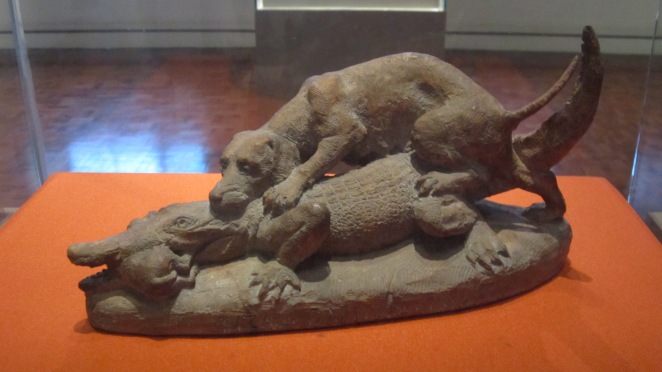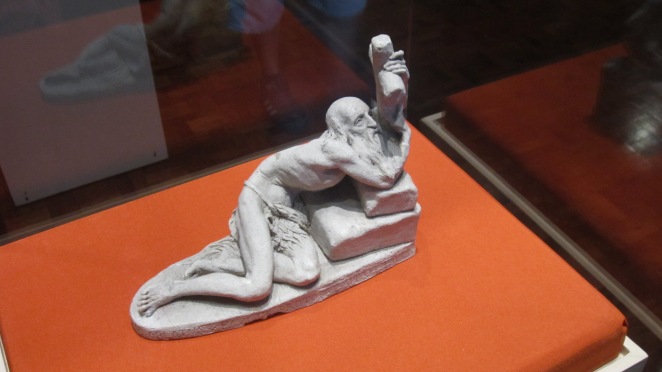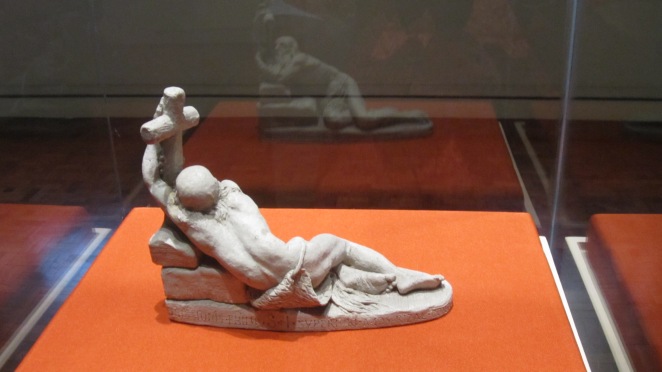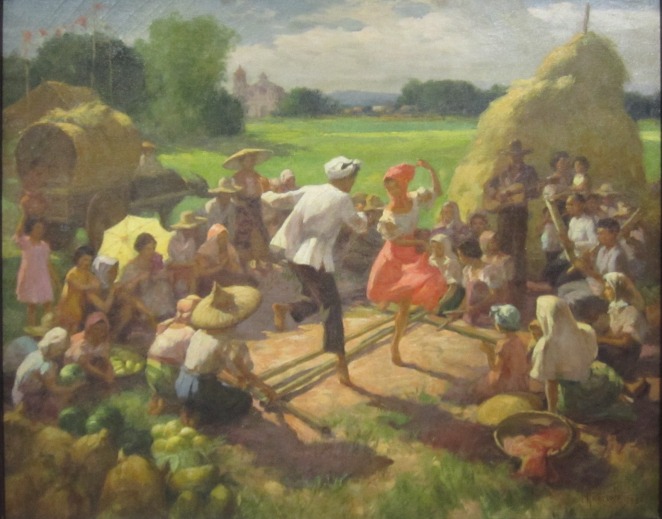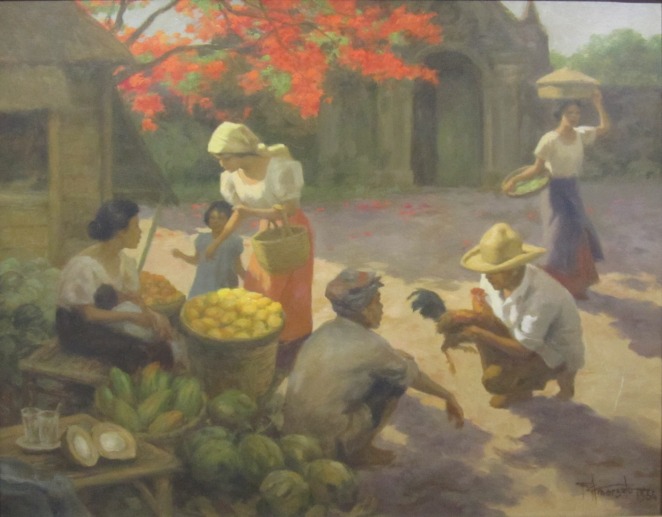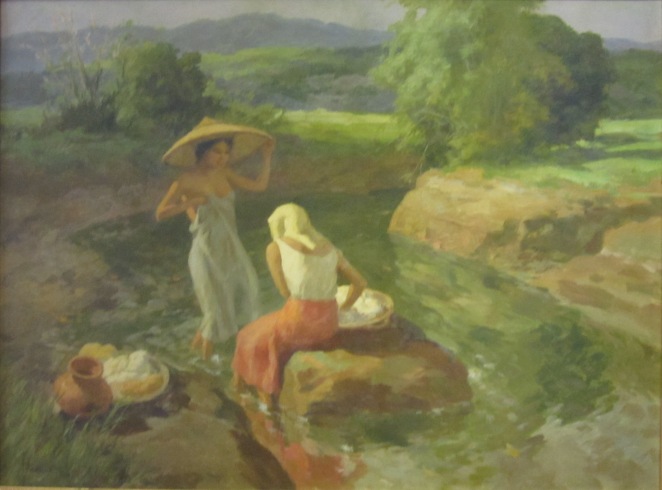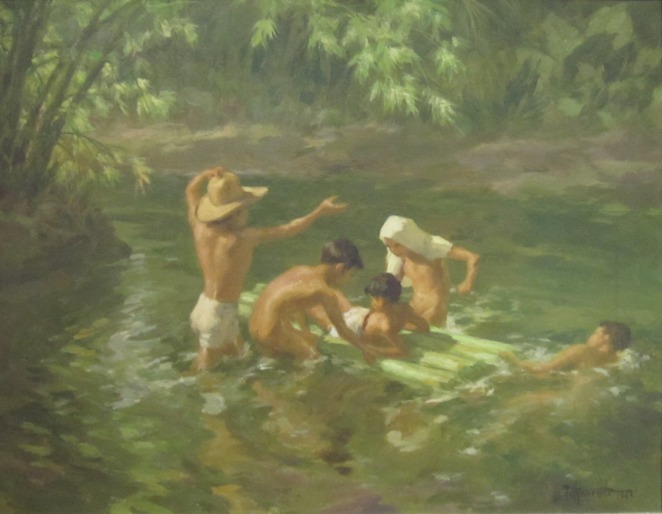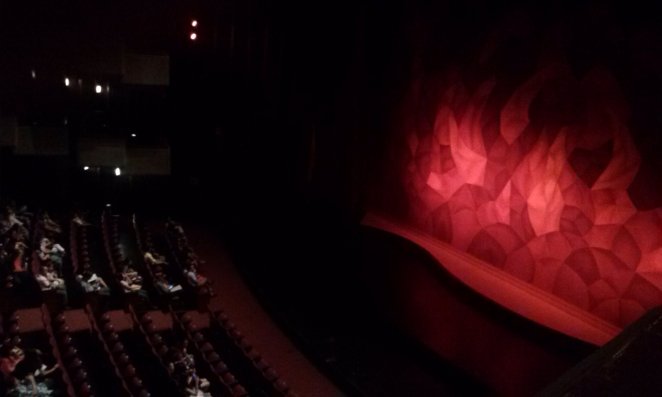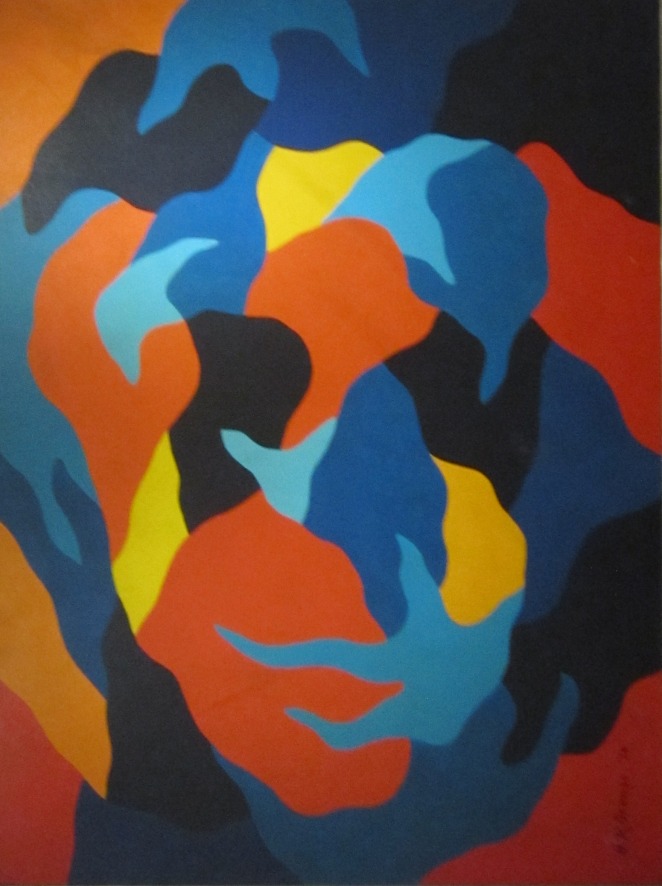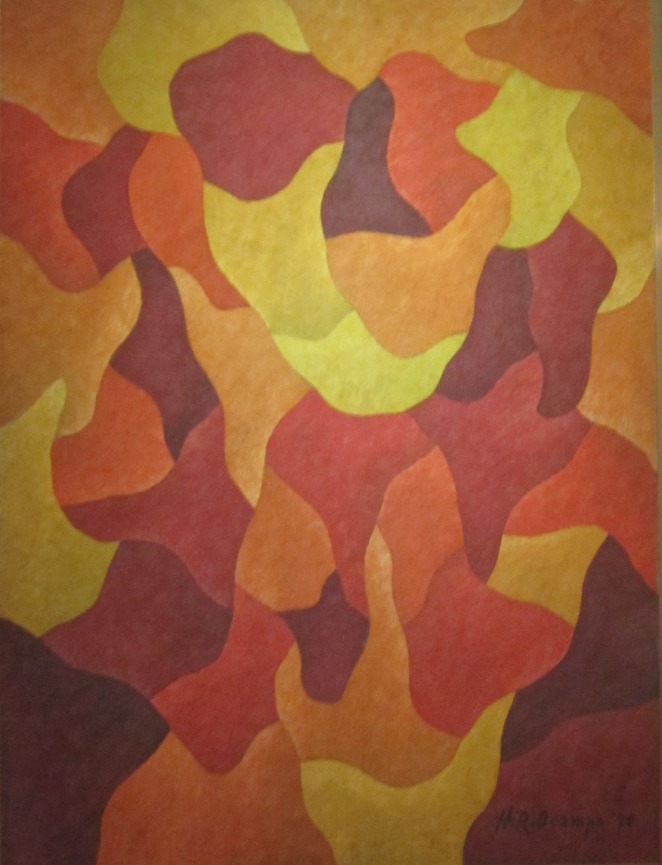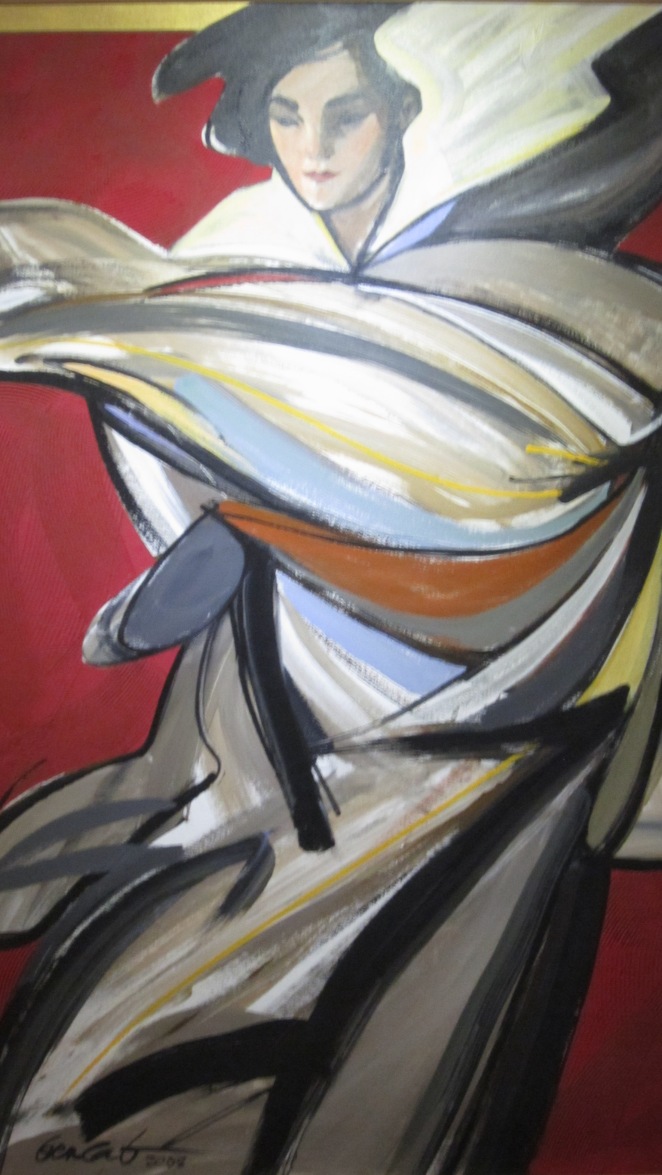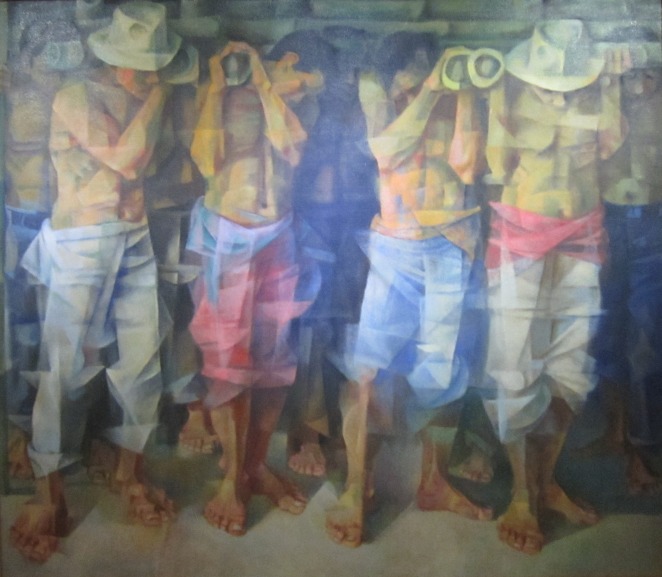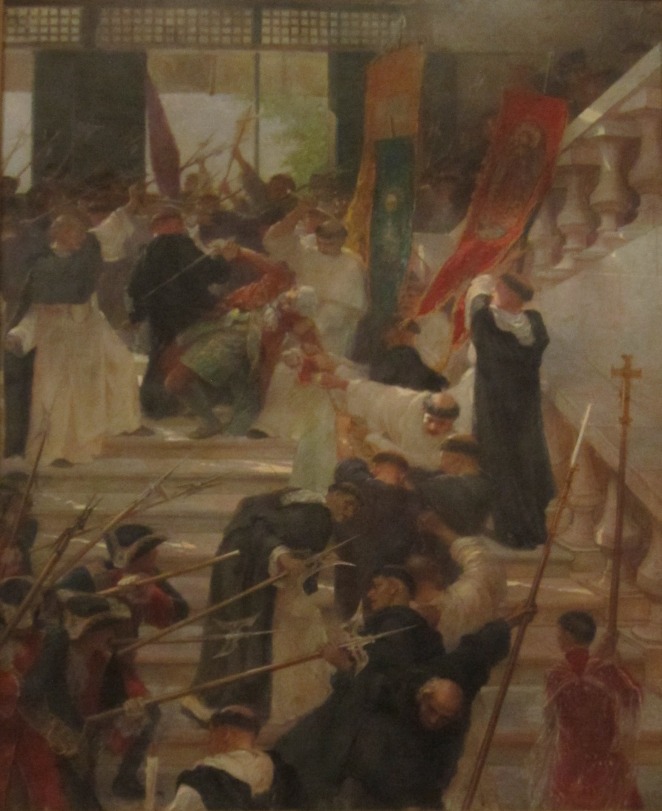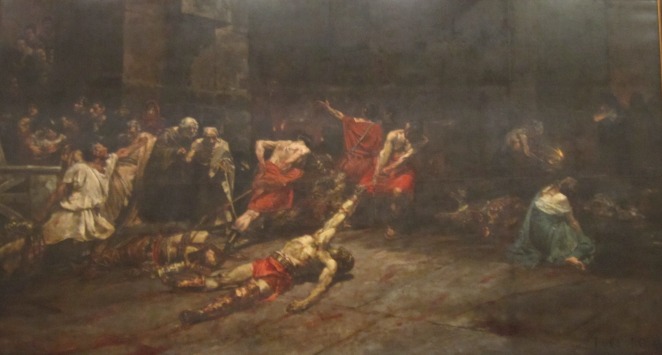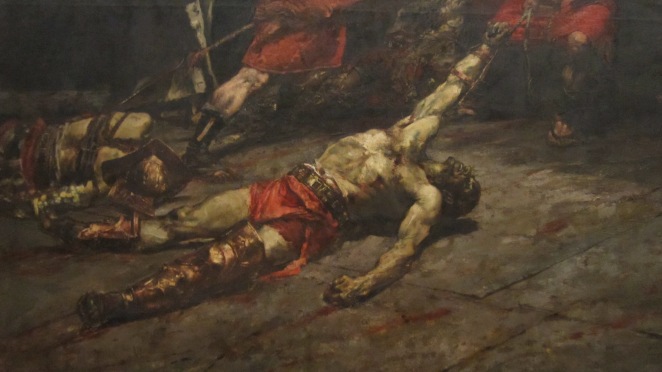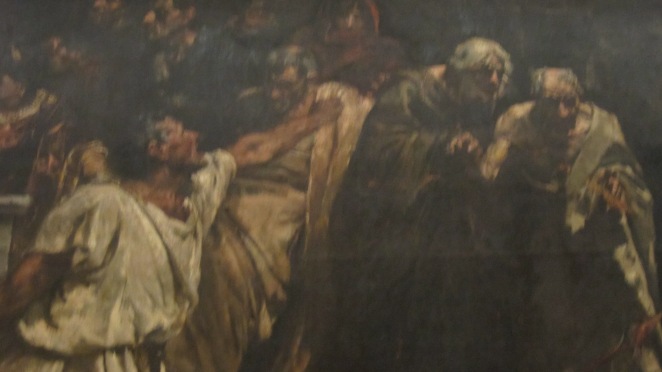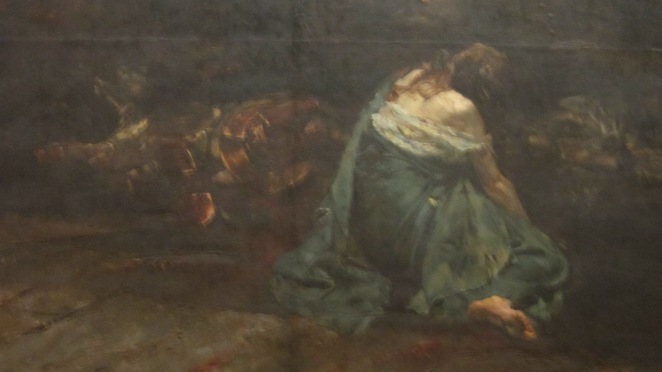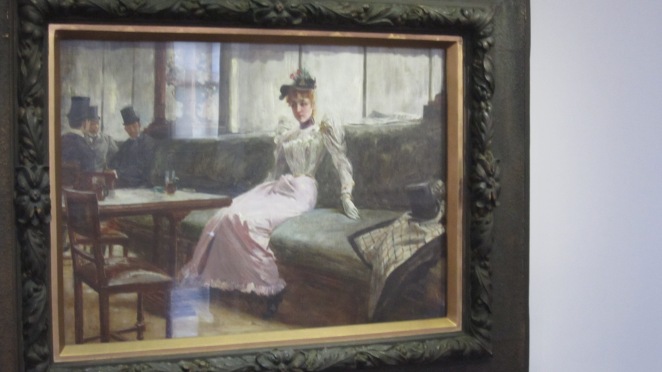I was lucky to have saved a schedule to visit the National Arts Gallery of the renovated National Museum. Armed with my camera (a point-and-shoot), I took pictures of some artworks by famous Filipinos, all of which had historical significance.
I’ll start with a Jose Rizal sculpture. This terra cotta piece quickly caught my attention. For me, it portrays the reflexive action of defense, disgust and anguish. In a way it also shows how one can uncontrollably do anything to protect one’s love. Here, the mother dog fights a vile crocodile to save her puppy. The scene can be seen as violent and intense. But I can also see love and protection.
Here is another sculpture by Rizal.
Fernando Amorsolo is famous for his depiction of the happy rustic life. For me, his works always convey a bright and jovial air, as if saying everything is all right. When I look at an Amorsolo, every thing seems positive. His works are best reflections of the bygone peaceful times.
Amorsolo also painted several portraits, one of which was left unfinished (nevertheless complete in its beauty).
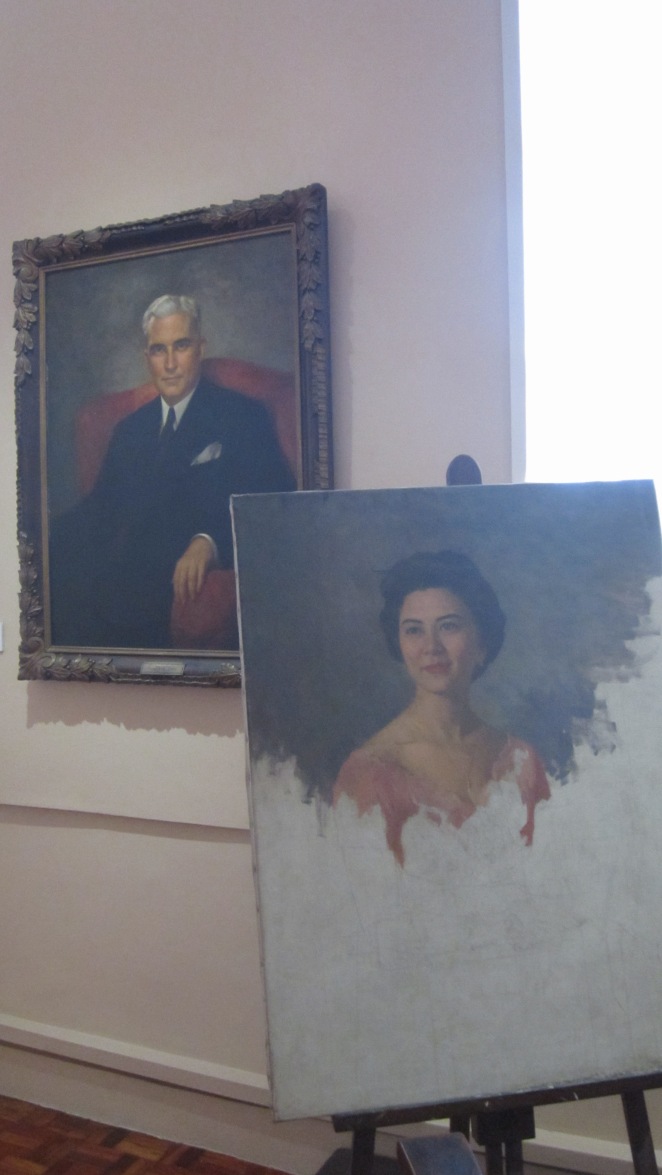
On the foreground is called “Portrait of a Lady”; on the background is “Portrait of Paul McNutt” (1944)
I will probably always remember the modernist Hernando Ocampo for his large abstract work “Genesis” used as a curtain at the proscenium stage of the Tanghalang Nicanor Abelardo at the Cultural Centre of the Philippines.
The following are some of Ocampo’s works as displayed at the National Art Gallery. I really cannot make out the represented forms of the artwork and its title. Perhaps my discernment and understanding of the meanings in an artwork are not that profound, but not shallow either. I do appreciate Ocampo’s works as pleasing aesthetically and imaginatively.
The following are more works from contemporary artists.
The National Art Gallery used to be the Legislative Building during the Commonwealth and early postwar years in the Philippines. This used to house the Senate chamber, as seen in the following pictures. Unfortunately, I failed to photograph the centre hall but instead captured the sides, the ceiling, and mezzanine, and the ornate designs. I wonder what could have been the feeling of being a senator, pondering over the laws of the land, set in this august chamber–coupled with bickering and politicking to defend ideals and principles. I just wonder. back then, the politicians were really thinking.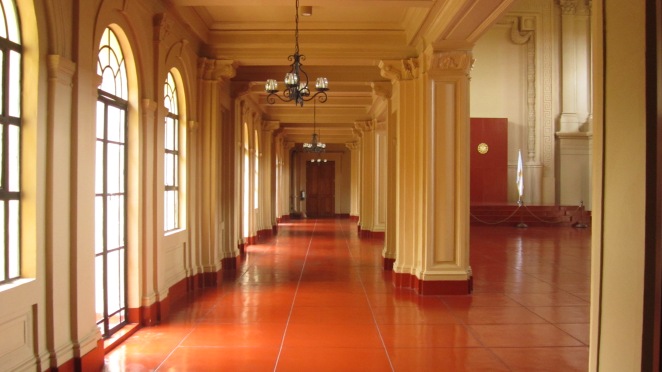
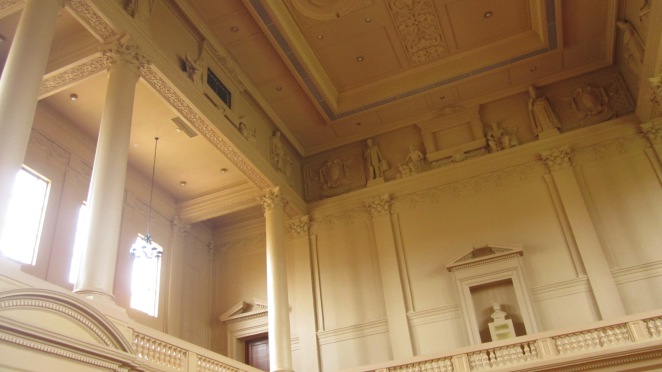
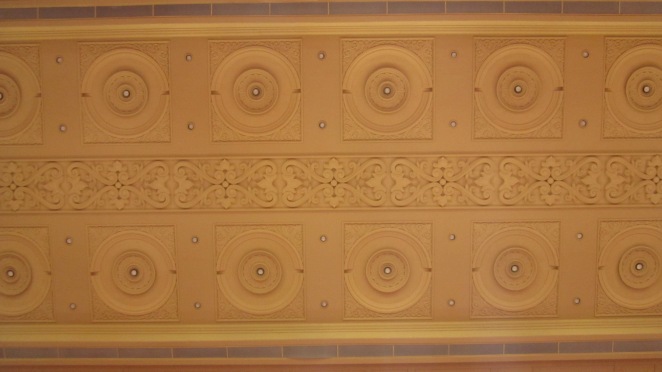
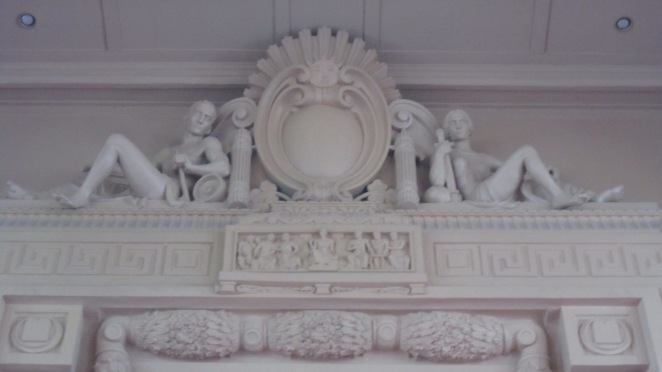
Next is a wonderful work by Felix Resurrecion Hidalgo–“The Assassination of Governor Bustamante”.
A meandering tour at the National Art Gallery is not complete without paying homage to the great Juan Luna work, which won him a gold medal at the Exposición Nacional de Bellas Artes in Madrid, Spain in 1884. (Hidalgo won a silver medal at the same event for his work “Las virgenes Cristianas expuestas al populacho”. Sadly, only a copy if it exists at the Meltropolitan Museum of Manila for the original was destroyed by fire in Spain.)
By the way, the Spoliarium is the chamber in the Colosseum where the killed gladiators were brought. Study the grim disposition and emotions of everyone inside this tormenting hall representing defeat.
Here are some details of the painting.
Another celebrated Luna painting is the “Parisian Life” which the country brought for P46 million at an auction in Hong Kong in 2002. Sorry for the window-reflection on the painting. The paining is exhibited in glass cover facing a gallery window. I can’t help but capture that annoying faint reflection.
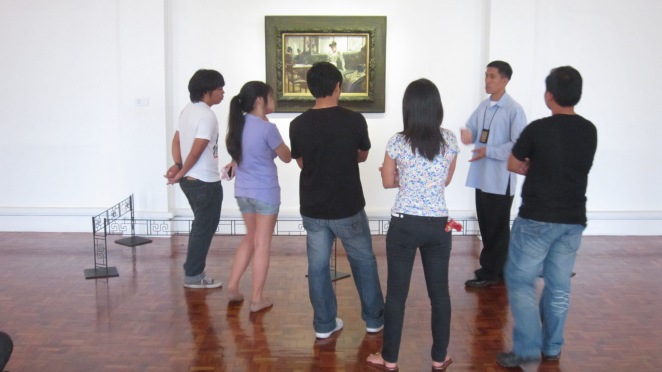
With a curator explaining how the country acquired the now-famous Luna painting from the Christie’s acution house in Hong Kong
That’s all from me for now.

